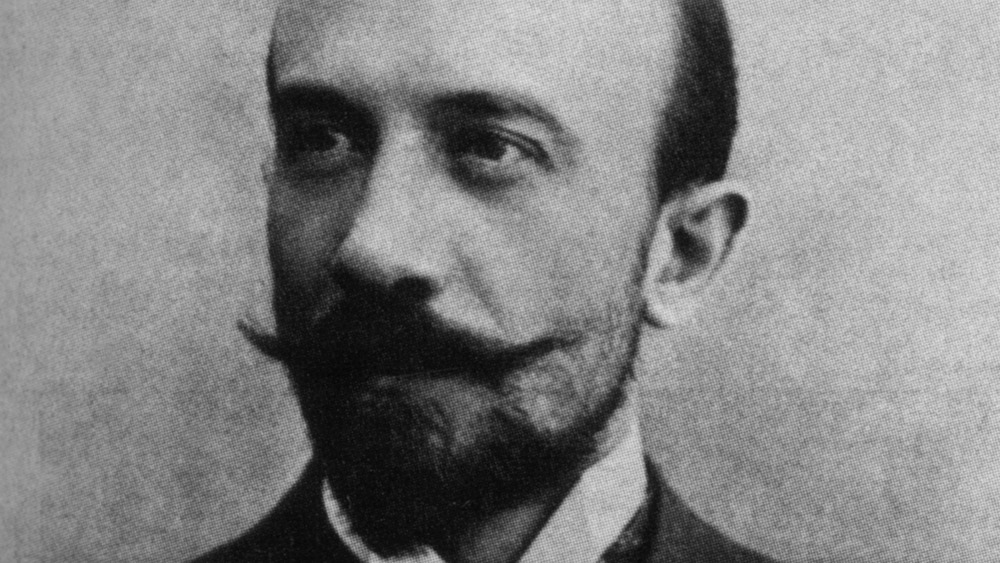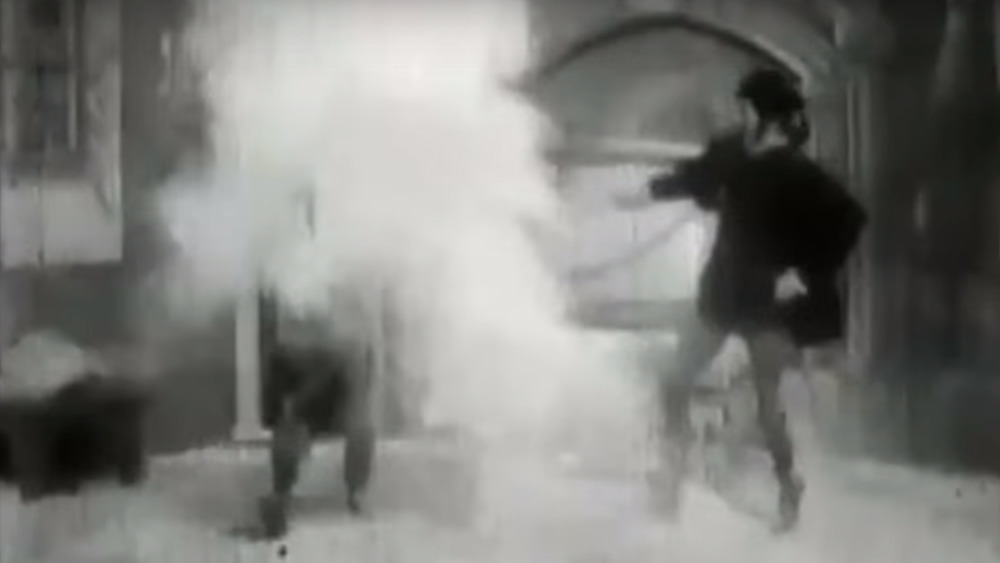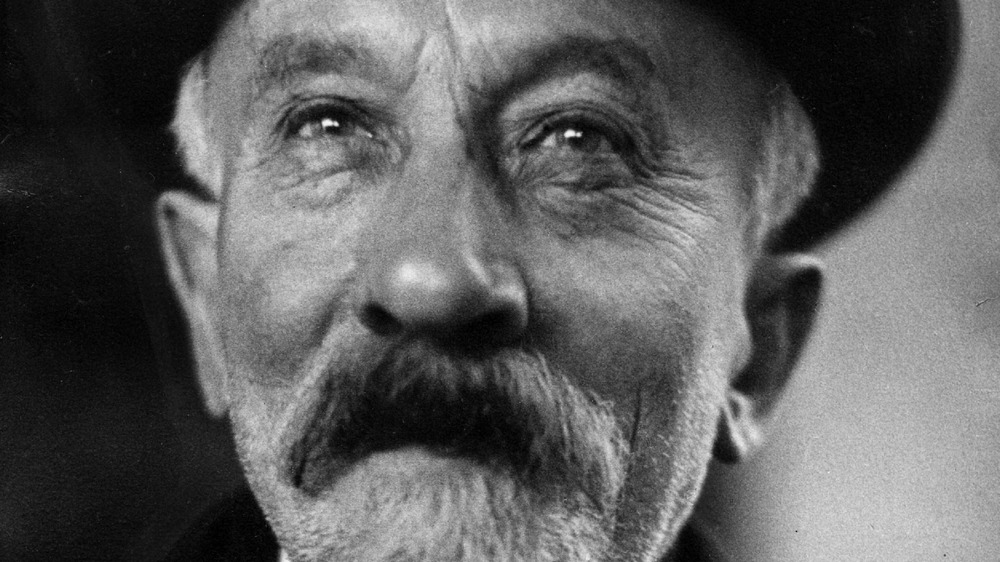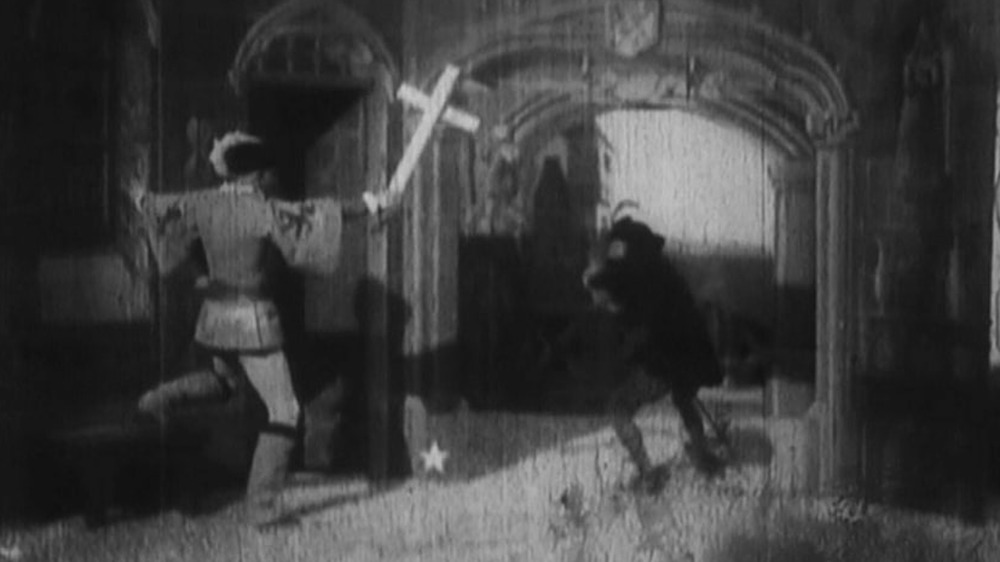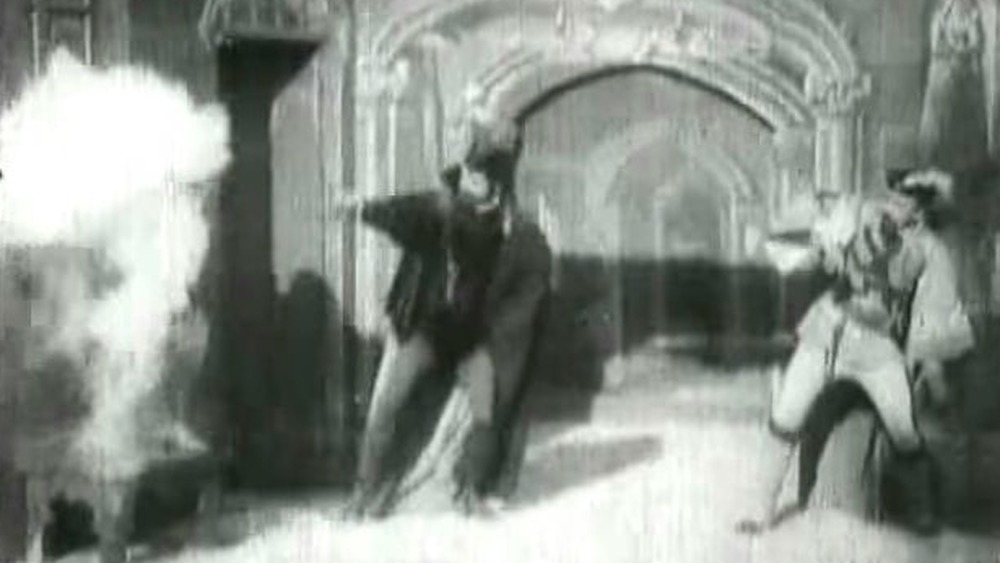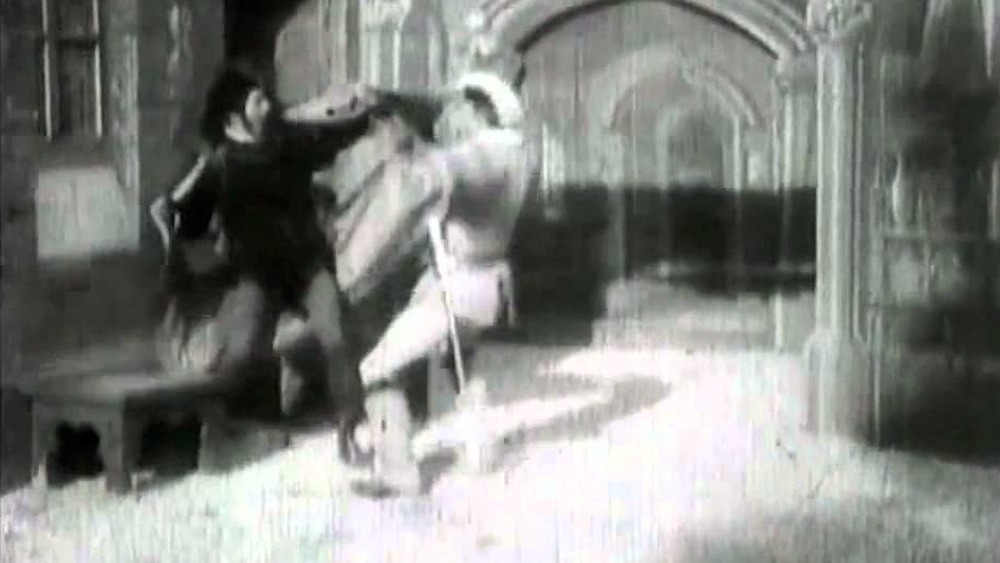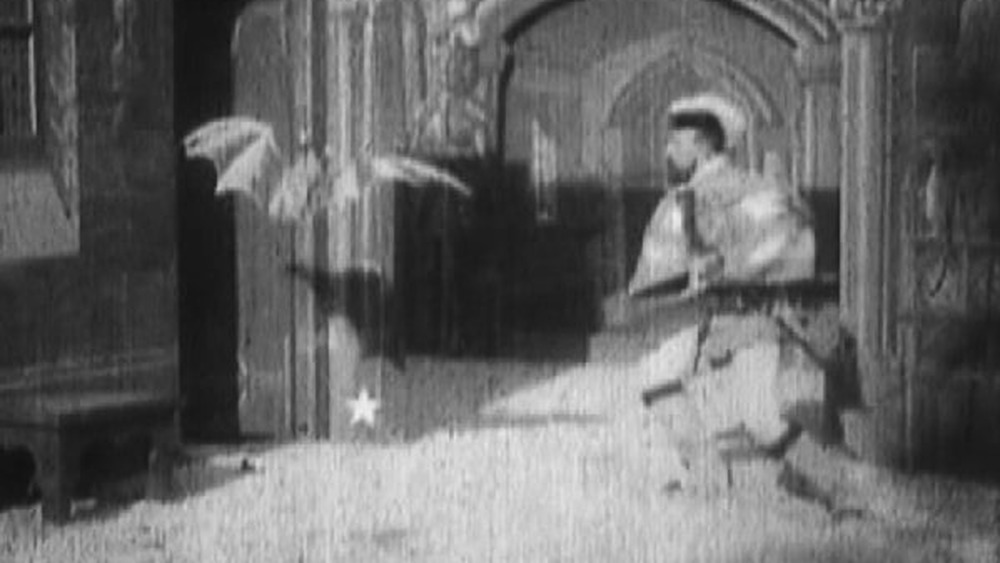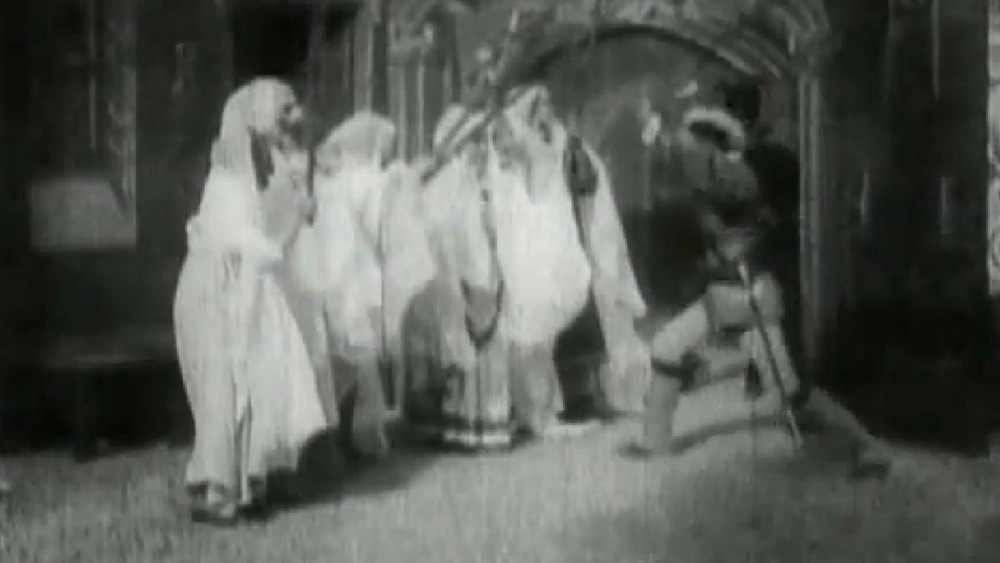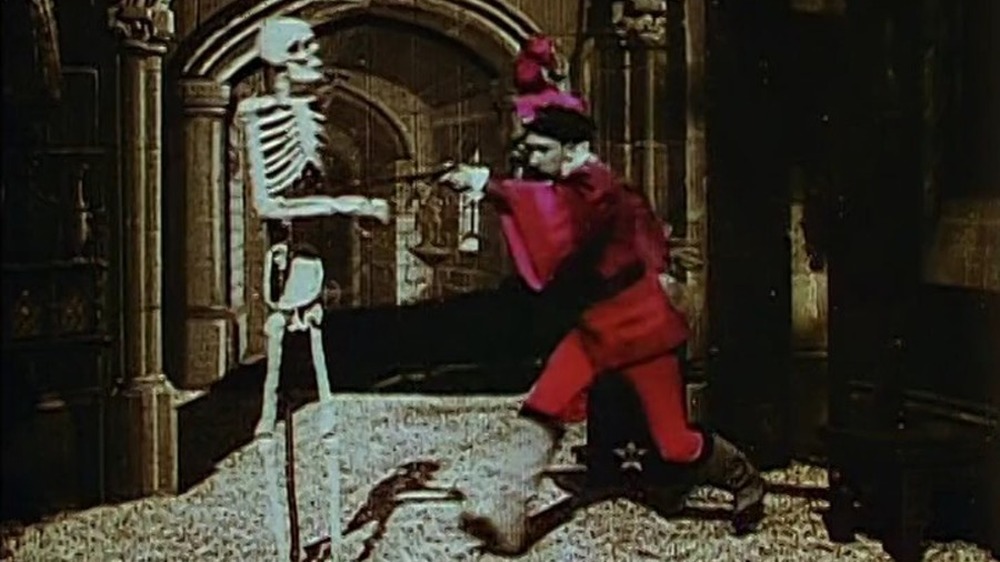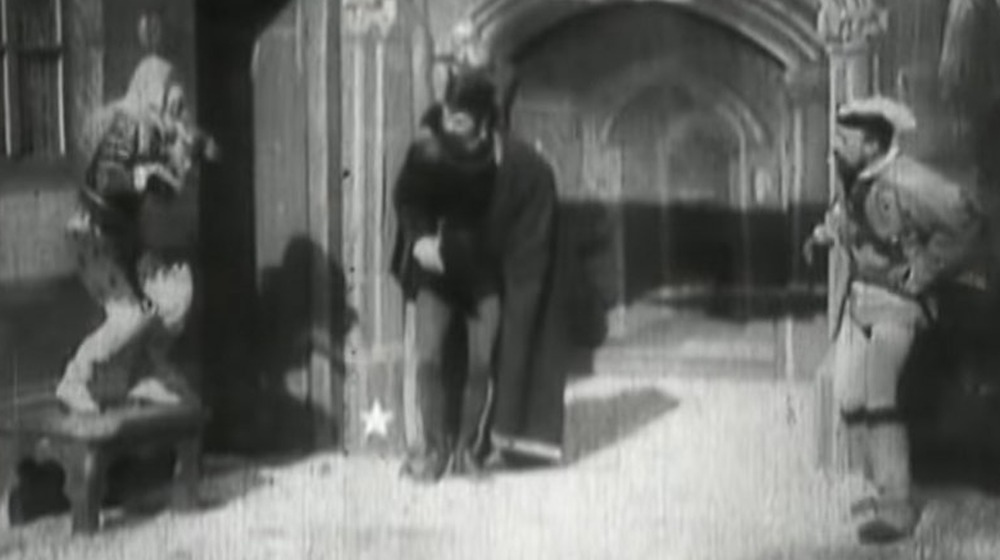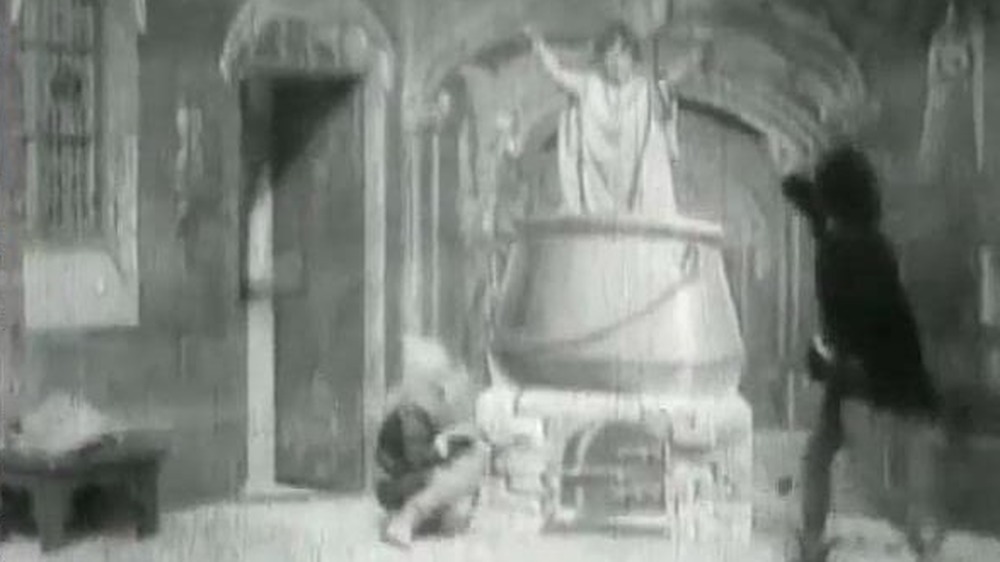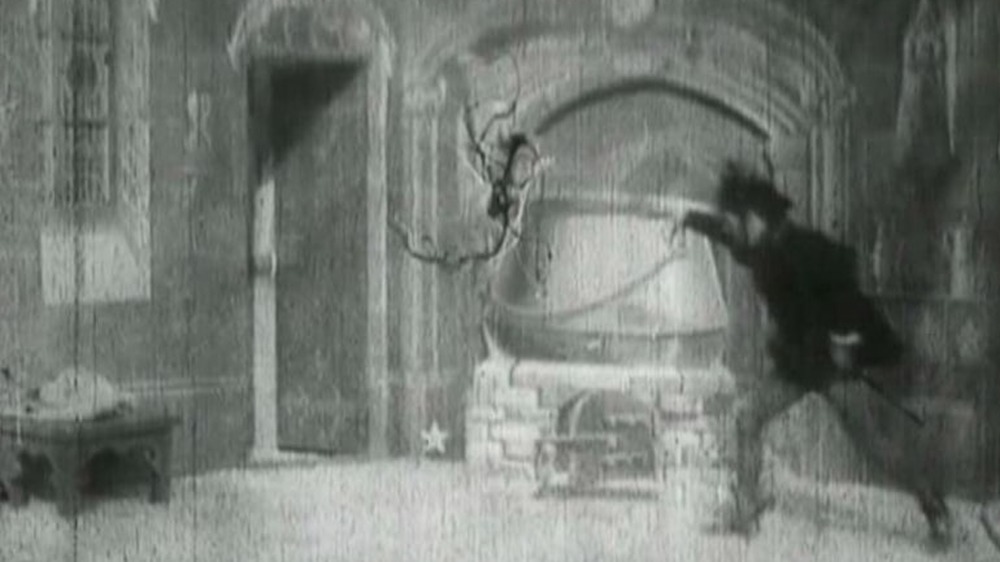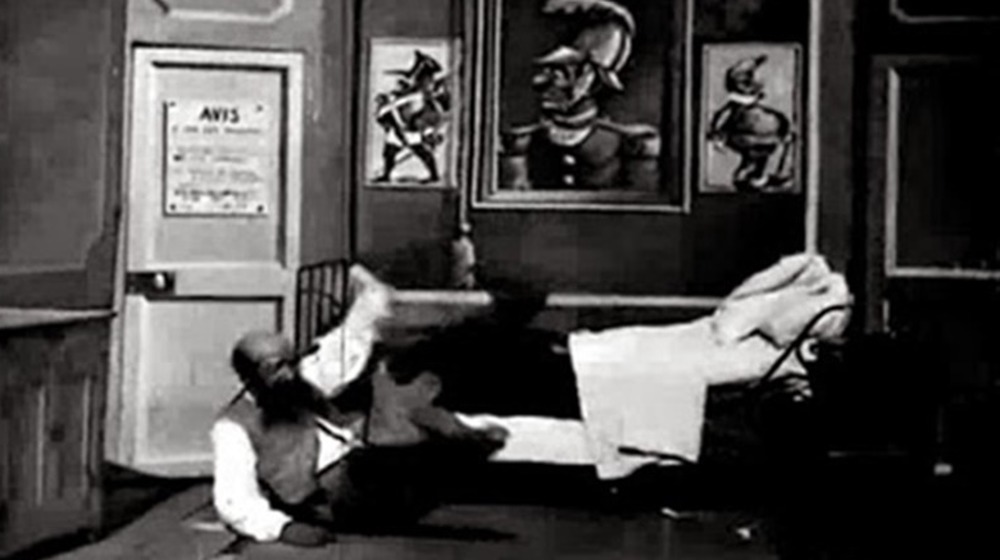The Truth About The First Horror Movie Ever Made
Today, plenty of early horror films are still viewed as classics, even if their special effects can't compare with modern work. From Nosferatu to Dr. Jekyll and Mr. Hyde, scary movies from the past still have the power to captivate us. But which film marked the beginning of the horror genre?
Some regard the 1920 film The Cabinet of Dr. Caligari as the very first horror movie — but decades prior, director George Méliès released a three-minute silent film entitled Le Manoir du Diable (also called The House of the Devil and The Haunted Castle) that rightfully earns this title. In 1896, Méliès captured horror on camera for the very first time, marking a turning point in the history of cinema. The film survives today, and watching it is a bit like opening a time capsule: You can enjoy the same exact viewing experience that audiences did back in 1896. Join us on a journey through cinematic history, as we witness the beginnings of the horror genre in Le Manoir du Diable.
It depicts an encounter with the Devil
Le Manoir du Diable opens with a shot of a large bat flying into a castle, which then transforms into the Devil, Mephistopheles. He produces a cauldron and an accompanying assistant, who helps him conjure a woman from the depths of the cauldron. The room is eventually cleared, and two cavaliers make their entrance, only for one to get spooked by the devil's assistant and flee. The second, made of stronger stuff, sticks around while the supernatural inhabitants of the castle play pranks on him. When a skeleton appears out of thin air, he tries to fight it off, only for the skeleton to transform into a bat and then become the Devil.
The Devil conjures up four specters, then brings the cavalier the woman from the cauldron. He is dazed by her beauty, but the devil turns her into an old crone before his very eyes. The first cavalier returns, but after briefly recovering his courage, he loses it once more and promptly jumps over the balcony's edge to escape. The remaining cavalier displays a crucifix to Mephistopheles, finally causing him to disappear.
It was directed by George Méliès
George Méliès was a pioneer of cinema. While working as a professional magician and theater manager-director, he became inspired by the short films produced by the Lumière brothers and realized the massive potential of this new art form. He purchased a camera, built his own studio, built sets, wrote scripts, and set about making movies. Méliès was the first to figure out how the camera itself could be used to create basic special effects on film, through the use of dissolves, slow motion, superimposition, double exposure, and other tricks and techniques. Today, George Méliès is best known for his short film A Trip to the Moon, which is often referred to as the very first science fiction film. That's right: This man is responsible for the first film of two cinematic genres.
Throughout his lifetime, Méliès produced more than 400 films. Méliès' skills as an illusionist made him uniquely adept at this new medium: Working in film was, to him, another way of creating visual magic. The alchemy his talents combined to produce changed the world forever.
The film was inspired by a camera malfunction
Why did Méliès set out to make Le Manoir du Diable? The events that led to the creation of this film were actually a complete accident. While Méliès was filming a street scene outdoors one day, possibly for another film project, his camera malfunctioned. It only took Méliès a few seconds to fix the problem, but this happy accident made a huge impact on the early development of cinema.
When the camera jammed, it created strange effects in the captured footage. Objects and people appeared out of nowhere. They disappeared without warning. And sometimes, Méliès discovered, an illusion had been created, in which one object looked as though it was transforming into another. Méliès was inspired by what he saw in this accidentally fantastic footage, and quickly realized that he could recreate these effects on purpose. Thus, the techniques he used to create the special effects in Le Manoir du Diable were born.
Groundbreaking early special effects
The special effects that you see in Le Manoir du Diable are nothing like the effects that directors use today. But Méliès' work was considered groundbreaking in the early days of the film industry, and laid the foundation for the flashy shots modern viewers enjoy.
While creating Le Manoir du Diable, Méliès obviously did not have access to the kind of equipment that directors now rely on. He could not use editing software or computer-generated imagery to create illusions, nor did he have access to entire departments of effects specialists. Instead, he had to be innovative and simply use the tools that were available to him. For Méliès, this meant experimenting with the kind of effects he could produce just by using his camera and the physical materials on set. These humble circumstances resulted in a tremendous wealth of effects: Méliès was able to make figures disappear and reappear, dissolve into puffs of smoke, and, most remarkably, transform into bats. He accomplished some of his most intriguing special effects by starting and stopping the camera to create multiple exposures. Méliès was not afraid to push the boundaries of what was possible in cinema at this time, and as such, was able to bring his visions to life without modern technology.
It was intended to be amusing to audiences
Le Manoir du Diable wasn't the first comedy film, but it did have comedic elements. Unlike many modern horror films, or even early horror films released in the decades immediately following Le Manoir du Diable's debut, Manoir wasn't necessarily intended to terrify audiences. Méliès crafted this film to amuse viewers as well as spook them.
For instance, as the Devil's assistant plays tricks on the cavalier, he pokes him in the backside, causing him to jump in a moment of pure slapstick. At one point, the cavalier tries to sit down, only for a skeleton to appear underneath him at that very moment. When the young woman turns into an elderly crone as the cavalier kisses her hand, he's clownishly shocked. All of these moments are very physical in nature, heralding later comic cinema from the likes of the Marx Brothers and Charlie Chaplin. It seems clear that Méliès wanted to get a laugh out of his audiences, and even today, these silly moments can easily make you chuckle.
It is also known as the first "vampire" film
Le Manoir du Diable wasn't just the first horror movie – it's also sometimes referred to as the first vampire movie. While there are no vampires explicitly depicted in the film, a bat transforms into a human in the very first scene, one of the most common tropes in vampire films and vampire novels. If we consider Le Manoir du Diable a vampire film, it represents the only appearance of a supernatural vampire on screen in the early cinema period.
It's worth noting that some film scholars dispute this designation, and argue that Méliès did not intend for the bat's transformation to symbolize the entrance of a vampire. This reading of the film is accurate, but the subjectivity of the story means that it is not absolute. While it's probably true that Méliès did not set out to make a vampire film, his use of what became a common symbol of the subgenre is still significant. Cross-pollination between genres is the lifeblood of cinema, after all, especially in its earliest days, when creators were not yet constrained by ironclad demographic concerns, iconography, and marketing categories.
The film introduced several horror motifs
Although Le Manoir du Diable isn't a particularly scary film, especially to modern viewers, it's known as the first real horror film in part because it introduced so many motifs still in use today. Moreover, when you consider the length of the film, it's enormously impressive that Méliès managed to incorporate so many spooky symbols in such a short period of time.
For instance, a skeleton suddenly appears, which startles the viewer. Several ghosts also make an entrance and swirl ominously around our hero. These four specters may not be as chilling as the ghostly special effects that we see in films today, but there is an undeniable terror induced by their sudden arrival. The woman who is pulled from the cauldron and is turned into a crone can be seen as an early depiction of a witch — her withered form immediately recalls The Wizard of Oz's Wicked Witch of the West. And, of course, the bat morphing into a human reminds the viewer of vampire films. As it turns out, our fears haven't changed much since this film was released.
A remake was produced a year later
Today, some cinephiles feel we're marooned in an age of remakes: As long as Hollywood knows that fans will line up to see a new version of a classic film, a remake will eventually hit the big screen. But remakes are not necessarily a new development. In fact, Melies followed up Le Manoir du Diable with a remake merely a year after he initially released the film. The remake was titled Le Château Hanté, which translates to The Devil's Castle. While it is often confused with Le Manoir du Diable, these are two distinct films.
In The Devil's Castle, a man is ushered into a castle, only to be surprised by the appearance of a specter. When the man tries to stab it with his sword, it turns into a skeleton. As soon as he attempts to grab the skeleton, it transforms into a guard wearing armor. Finally, the Devil himself appears, and as the man tries to leave, the specter returns, frightening him and causing him to flee.
It was presumed lost for decades
Nowadays, anyone can easily watch Le Manoir du Diable online. However, this important film was almost lost to time. At some point during the 20th century, what was believed to be the only surviving copy of the film was lost, and for decades, nobody knew where it was. It's almost unthinkable that this piece of cinematic history nearly disappeared, and that the world came very close to containing no first-hand memory of it.
But in 1988, the film was finally recovered: A copy, originally purchased in a junk shop in the '30s or '40s, was found by an archivist in the New Zealand Film Archive. Finding this film was a key step in piecing together the history of the horror genre in film. Without it, we simply couldn't see what audiences experienced when they sat down to watch the very first horror movie. Being able to watch what they watched allows us to trace the development of this genre from its earliest iteration to the movies we see today. We can see with our own eyes how the themes and motifs that Méliès included in his storyline are still represented in the horror genre — and today, we can even do that with just a few mouse clicks.
Most of the actors were anonymous
If you're wondering who appeared in the very first horror movie, you're in for a serious disappointment. While the actors who appear in Le Manoir du Diable took part in a historic production, most of them have never been identified — when Méliès was making movies, actors were rarely credited in their films. However, we do know the identities of a few of the people who appeared in Le Manoir du Diable.
The woman who is conjured out of the cauldron was most likely played by Jehanne d'Alcy, an actress who was married to Méliès. While the identity of the actor who played Mephistopheles is technically unconfirmed, it was most likely Jules-Eugène Legris, who went on to act in several of Méliès other films, including A Trip to the Moon. As for the others, we will likely never know their names. Although they played a major role in film history, they will always be anonymous to us.
It was unique for its narrative
One reason Le Manoir du Diable stands out amongst other short films of this era is that it presents the audience with a real narrative. In the early days of cinema, films were not typically structured around dramatic storylines. They were incredibly short, after all: There wasn't much time to convey any sort of deep message. Directors aimed to invoke some kind of emotion in their audience, but films during this time period rarely had plots. They're the cinematic equivalent of sketches, getting across an idea but not bothering with much structure or background.
But this is one area in which Méliès excelled. He wasn't just an illusionist with a camera, he was also a talented storyteller — and in Le Manoir du Diable, he used unique visuals to tell a story, as well as astonish. He could not use a script and dialogue to do it, but through his actors' physical movements and expressions, as well as his special effects, he was able to convey something more than a series of interesting visuals: He told a short story about an encounter with the Devil.
Melies went on to direct several other horror films
Méliès was a very prolific director. After releasing Le Manoir du Diable, he went on to release hundreds more films. While he dabbled in many different genres, he did produce more horror films later on in his career: In addition to the remake of Le Manoir du Diable, he is also known for horror productions like La Caverns Maudite and L'auberge Ensorcelee.
La Caverns Maudite, which translates to The Cave of the Demons, tells the story of a young woman who comes across a mysterious cave. As it turns out, the cave is the residence of the spirits and skeletons of those who have died there. In L'auberge Ensorcelee, or The Bewitched Inn, a traveler spends the night at an inn where he is overcome with serious fatigue, only to discover a supernatural presence. Méliès definitely had an appreciation for horror, and his work paved the way for countless horror creators who came after him.
